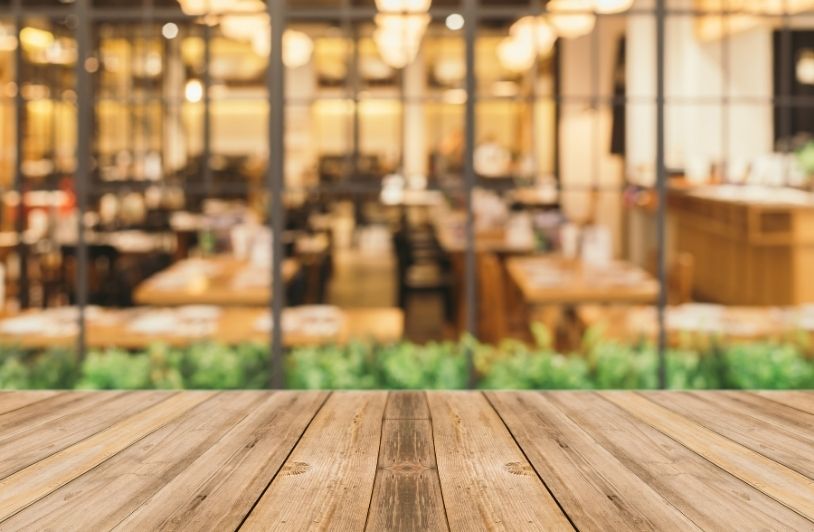Every restaurant interior tells a story, and sometimes that story starts not with decoration but with economy. The design choices guests experience, the thickness of a tabletop, the finish of its edge, and the materials that capture the light all reflect a balance between budget, brand, and the overall economic situation in the world.
In times of financial growth, restaurants are turning to statement pieces: marble Restaurant tablessculptural bases and custom designs that speak of abundance and confidence. In times of tight spending, the emphasis is on versatility and durability, laminate finishes that mimic luxury, steel frames that outlast trends, and modular floor plans that can change based on demand.
Every decision, whether visible or not, becomes an indicator of how the industry is adapting to changing conditions. Restaurant tables, often overlooked by diners, are silent storytellers of both creative ambition and economic reality.
Material selection in a changing market
As supply chains evolve and material costs fluctuate BusinessDesigners have become more and more imaginative. Switching to sustainable and cost-effective materials is not only an ecological but also an economic measure. Solid wood is still valued for its authenticity, but many operators now prefer engineered wood or composite finishes that maintain their beauty at a lower cost.
These decisions serve multiple goals: visual appeal, resilience and financial efficiency. A table must function daily with constant use, but also be consistent with the brand values. For example, a high-end bistro might choose recycled oak to express environmental responsibility, while a fast-casual chain might choose durable laminate to ensure affordability and easy replacement.
Every surface material today has a meaning that goes beyond aesthetics; it represents strategy.
Design as a measure of trust
The appearance of restaurant furniture often reflects market sentiment. After downturns, minimalist designs with honest materials that reflect caution and simplicity gain popularity. As the economy recovers, we'll see the return of bold geometry, shiny surfaces and generous spacing that signal optimism.
Designers recognize this pattern and use it consciously. A table that appears generous in its proportions conveys fullness. A smaller, efficient layout suggests prudence and adaptability. These unspoken messages shape the way customers interpret a restaurant's story before they even read the menu.
Balancing beauty and budget
The smartest restaurant designs manage to express personality without overspending. Owners are increasingly investing in furniture that looks high quality but offers flexibility and durability.
The most successful approaches include:
- Mixed materials: We combine affordable steel frames with high-quality table tops.
- Choose versatile shapes: square and rectangular panels that can be combined or easily reconfigured for events.
- Invest in timeless surfaces: neutral tones and subtle grain that stay relevant for years.
- Choose high-quality craftsmanship: Furniture that can withstand heavy use and still represent the brand well.
This mix of creativity and caution defines today's design language: elegant but efficient, expressive but grounded.
Local craftsmanship, global supply
Changes in the economy have also changed how and where furniture is made. Global sourcing is still useful for keeping costs down, but supply chain issues have led people to want to return to local craftsmanship. More and more restaurants are working with local manufacturers to create tables that fit their space and tell their story.
Doing things on-site not only reduces delays, it also makes them more realistic. A handcrafted table made from wood that grows locally conveys a sense of place and tells a story. It ties the restaurant's identity to the neighborhood while supporting small businesses.
Sustainability as an economic advantage
Environmentally conscious design It used to be expensive, but today it is a long-term investment that often saves money. Long-lasting, renewable materials reduce replacement costs while efficient manufacturing minimizes waste. Customers are also more likely to support restaurants that demonstrate environmental integrity, which translates into both loyalty and reputation.
In this sense, sustainability and economics no longer compete; they complement each other. A table made from recycled composite or a top made from locally grown bamboo can be both cost-effective and brand-boosting.
Flexibility in times of change
Adaptability has become the most valuable design principle of the decade. Restaurants now favor tables that can be easily moved, stacked together for larger groups, or folded for storage during off-peak hours. This flexibility helps businesses respond to unpredictable demand and evolving service models such as delivery, outdoor dining and hybrid layouts.
Every detail counts. Adjustable bases, stackable surfaces and weather-resistant coatings expand usability across seasons and concepts. Furniture is no longer a static cost; it is a dynamic asset.
A future based on balance
Every table in a restaurant has a silent reminder of its time. Its materials, dimensions and finishes tell a story of how design changes with time and market needs. What seems like a simple dining surface can often tell a much bigger story about strength, creativity and who you are.
As the economy changes, restaurants still must find a balance between creativity and practicality, beauty and durability, and ambition and efficiency. The table is still the most important part of this story because it links design decisions to real-world problems. It shows us that good craftsmanship and knowledge of the economy can work well together, even when things are uncertain. Each table, polished and useful, shows that design is not just about what we see. It's also about how an industry lives, changes, and tells its narrative surface by surface.
CLICK HERE TO DONATE TO SUPPORT OUR COMMUNITY COVERAGE OF ARTS AND CULTURE


